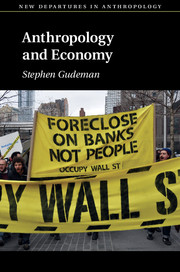2 - The Strength of the House
Published online by Cambridge University Press: 18 December 2015
Summary
My initial and subsequent field studies in Panama and Colombia were serendipitous and fortunate happenings. They led me to study house economies and ways of making economy outside markets. When I began this fieldwork, I did not know what a house economy was, and I hardly had an image of modern market economies as presented in popular writings or formal texts. Only slowly did I become aware of systematic economies at the edges of markets where I was located. These economies did not resemble our market economies, and the books I scoured for help offered little assistance.
In these two areas of Latin America, economies are organized through the house and are animated by a flow of life's energy. Both field discoveries turn standard models of economy on their heads. The house rather than the market provides the structure and image for organizing material life. More remarkable, the people conceive of and make their material connections through sharing the energy of life. Anthropologists often claim that social relationships provide the groundwork for running some economies, whereas economists say self-interest runs the world. My local findings suggest that life's energy flowing through the house underlies material life. From the perspective of these economies, the market is an abstraction and as we shall later see an extraction from their life energy.
Panama and Colombia
I lived in a Panama village with my wife for eighteen months during the later 1960s. Located in the interior of the country, the community consisted of ninety-one households. A decade after, I explored with my colleague, Alberto Rivera, house economies in the highlands of Colombia. Panama had been part of Colombia since their independence from Spain in the early nineteenth century until they became separate nations immediately prior to the building of the Canal at the beginning of the twentieth century. This parting of a single nation into two owed more to political and capital interests than to cultural and social differences, and the voice of the rural populace. During my first research in Panama I knew that I was working within a social, cultural, and economic zone whose tendrils stretched beyond the Isthmus into Central America to the north and beyond the Darien jungle in the south into Colombia, which is the principal reason I subsequently went there.
- Type
- Chapter
- Information
- Anthropology and Economy , pp. 24 - 51Publisher: Cambridge University PressPrint publication year: 2016



